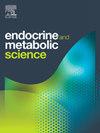Optimizing blood glucose predictions in type 1 diabetes patients using a stacking ensemble approach
Q3 Medicine
引用次数: 0
Abstract
Introduction
The diabetes pandemic, including 828 million adults worldwide in 2022, would benefit from continued development of novel, effective and accurate blood glucose prediction systems. Using the DiaTrend dataset, this study used stacking machine learning optimized by Grey Wolf Optimizer to construct and assess prediction models for blood glucose levels in type 1 diabetes patients.
Methods
The DiaTrend dataset includes 27,561 days of continuous glucose monitoring and 8220 days of insulin pump data for 54 patients with type 1 diabetes. Grey Wolf optimization was used to tune and evaluate three machine learning algorithms – Random Forest, LSTM, GRU – for blood glucose predictions, whose predictions were then combined into an XGBoost stacking ensemble meta-learner.
Results
This study looked at three baseline algorithms for predicting blood glucose levels. Machine learning models Random Forest, LSTM, and GRU served as baselines, with MAE, RMSE, and MARD values. GRU had the best predictive accuracy of the initial models. Grey Wolf optimization contributed to achieving optimal baseline model results. Stacking ensemble learning via XGBoost meta-learner (MAE = 10.65, RMSE = 14.59, MARD = 6.98) achieved higher performance than the baseline models.
Conclusion
The GRU method with Grey Wolf optimization outperformed the other models with the lowest MAE, RMSE, and MARD, but the Stacked XGBoost model fared best. These findings emphasize the need to improve parameter selection with approaches such as Grey Wolf or stacking ensemble methods to achieve accurate blood glucose predictions. These prediction models can aid in the continued development of monitoring devices, and algorithms for these devices, which contain alert systems for impending abnormal blood glucose levels, allowing for timely diabetes self-management.
使用堆叠集成方法优化1型糖尿病患者的血糖预测
到2022年,全球将有8.28亿成年人患有糖尿病,新型、有效和准确的血糖预测系统的持续发展将使糖尿病大流行受益。本研究使用ditrend数据集,使用灰狼优化器优化的堆叠机器学习构建和评估1型糖尿病患者血糖水平的预测模型。方法ditrend数据集包括54例1型糖尿病患者27561天连续血糖监测和8220天胰岛素泵数据。灰狼优化用于调整和评估三种机器学习算法——随机森林、LSTM、GRU——用于血糖预测,然后将其预测合并到XGBoost堆叠集成元学习器中。结果:本研究着眼于预测血糖水平的三种基线算法。机器学习模型Random Forest, LSTM和GRU作为基线,具有MAE, RMSE和MARD值。在初始模型中,GRU具有最好的预测精度。灰狼优化有助于获得最佳的基线模型结果。通过XGBoost元学习器的叠加集成学习(MAE = 10.65, RMSE = 14.59, MARD = 6.98)取得了比基线模型更高的性能。结论采用灰狼优化的GRU方法在MAE、RMSE和MARD方面均优于其他模型,但以Stacked XGBoost模型表现最好。这些发现强调需要改进参数选择的方法,如灰狼或堆叠集成方法,以实现准确的血糖预测。这些预测模型有助于监测设备和这些设备的算法的持续发展,这些设备包含即将出现的异常血糖水平的警报系统,允许及时的糖尿病自我管理。
本文章由计算机程序翻译,如有差异,请以英文原文为准。
求助全文
约1分钟内获得全文
求助全文
来源期刊

Endocrine and Metabolic Science
Medicine-Endocrinology, Diabetes and Metabolism
CiteScore
2.80
自引率
0.00%
发文量
4
审稿时长
84 days
 求助内容:
求助内容: 应助结果提醒方式:
应助结果提醒方式:


